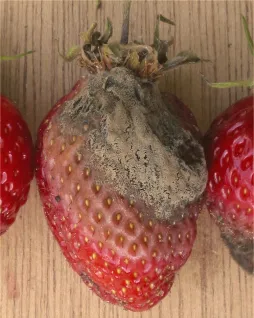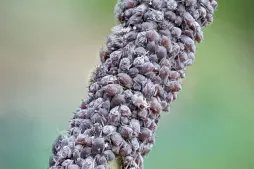Rhododendron simsii, the florist's azalea
Japan doesn't have a monopoly on azaleas! The florist's azalea, in Latin Rhododendron simsii, grows in Asia, from China to Vietnam. A member of the Ericaceae family, it blooms abundantly and fragrantly.
How to recognize the florist's azalea, Rhododendron simsii?
Rhododendron simsii is a shrub that reaches 2.5 meters in all directions when planted in the ground. In pots, it grows to no more than one metre. It has a bushy, spreading habit.
The florist's azalea is often sold with a single, long trunk. In the wild, however, the plant is highly branched. The lowest branches grow from the base of the trunk.
The leathery leaves are oval to lanceolate. They are five centimetres long and two centimetres wide. Both sides are covered with a fine reddish down.
Rhododendron simsii blooms in spring. Fragrant flowers bloom in pairs or clusters at the ends of branches. The botanical variety has simple, five-petaled flowers. They are white with a pink heart. Like japanese Azalea, the florist's azalea has given rise to hundreds of hybrids. Single or double flowers are now available, some with a crinkled appearance, and some with a single or two-tone color. Their colors range from pure white to deep red, pink and violet.
The florist's azalea is toxic. The plant causes digestive problems if ingested. It also causes mucous membrane burns and skin irritation on contact. Keep your Rhododendron simsii away from cats and dogs, and protect yourself during pruning and repotting.
Our maintenance tips
Florists' Azaleas thrive in acid soil. If your garden soil is alkaline, plant in pots.
Watering
Keep the soil slightly moist. Water only when the substrate is dry on the surface, for one or two centimeters.
Water with non-calcareous water at room temperature, without soaking the soil.
Thirty minutes after watering, empty any stagnant water from the cup. This will keep the roots dry and prevent them from rotting.
Repotting
When the roots escape from the pot, it's time to repot your Florist's azalea.
Get a new pot with a slightly larger diameter and depth than the previous one. Pour a bed of clay balls or gravel into the bottom for drainage.
Florists' Azaleas plants like light, rich, well-drained soil. Fill your pot with a mixture of one third potting soil for green plants, one third sand and one third heather soil.
Remove your Rhododendron simsii from its old container. If the roots have begun to turn in circles, untie them. Place your subject in the center of the pot and fill in with substrate. Tamp and water for the first time.
Fertilization
You can stimulate the growth of your plant during its growth phase, in spring and summer, with fertilizer.
Apply a fertilizer for flowering or acid-loving plants. Follow the manufacturer's instructions to avoid damaging the foliage.
Prune
To encourage the growth of your Florist's azalea, prune regularly.
You don't need to prune your Florist's azalea. Just remove wilted flowers and dead leaves.
You can also cut away dead wood with clean, sharp pruning shears.
Plantation
Once the last spring frosts have passed, you can plant.
Choose a location in partial shade, under a tree for example.
Soak the rootball of your Florist's azalea, preferably in rainwater. Meanwhile, dig a hole twice as wide and as deep as the rootball.
Plant your Florist's azalea and backfill with a mixture of garden soil, heather and compost. If your soil is heavy, add gravel or sand to improve drainage.
Tamp and water to encourage rooting. Mulch with organic matter, such as pine bark, to keep the soil cool.
Cutting
Select a branch that has not yet flowered and whose tip is still flexible.
Take a section about ten centimetres long. Cut with clean, sharp pruning shears below a node.
Dress your cutting. Remove the leaves on the lower half of the shoot. You can reduce the size of the others by half.
Fill a pierced pot with a mixture of universal potting soil(1/3), sand(1/3) and heather (1/3). You can also use potting soil for seedlings and cuttings mixed with perlite. Form a pre-hole and plant your cutting in the center. Pack lightly.
Cutting is done in a smothered fashion. Place your Florist's azalea in a mini greenhouse or translucent crate. You can also cover it with a transparent plastic bag.
Your cutting needs humidity to develop. Fog the leaves and potting soil whenthey are dry, to maintain a high level of humidity. But beware of rot! You need to aerate for a few minutes every day to avoid rot.
Diseases / Threats
Information
| Family | Ericaceae - Ericaceae |
| Type | Rhododendron - Rhododendron |
| Species | Florist's azalea - Rhododendron simsii |
| Lifecycle | Perennial |
| Foliage | Evergreen |
| Exposure | |
| Substrats | |
| Planting methods |
Open ground In pots In tubs |
| Categories | |
| Tags |
Beginner Flowery |
| Origins |
Central Asia Southeast Asia |
| Hardiness (USDA) | 8b |
| Leaf color |
|
| Flower colors |
|
Discover plants from the same family
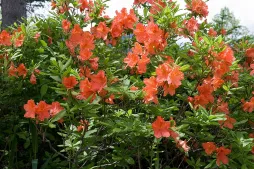
Japanese azalea
Discover
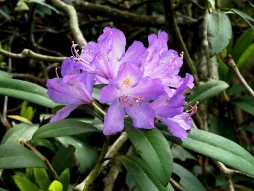
Rhododendron ponticum
Discover
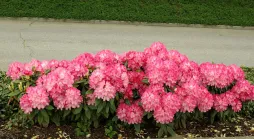
Rhododendron yakushimanum
Discover

Common heather
Discover













